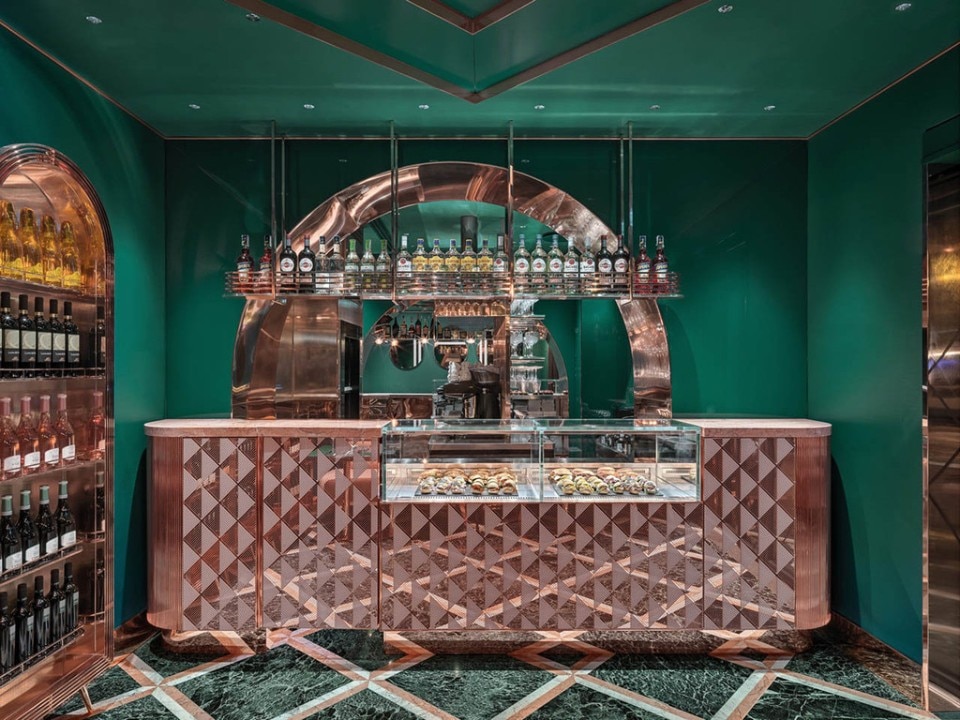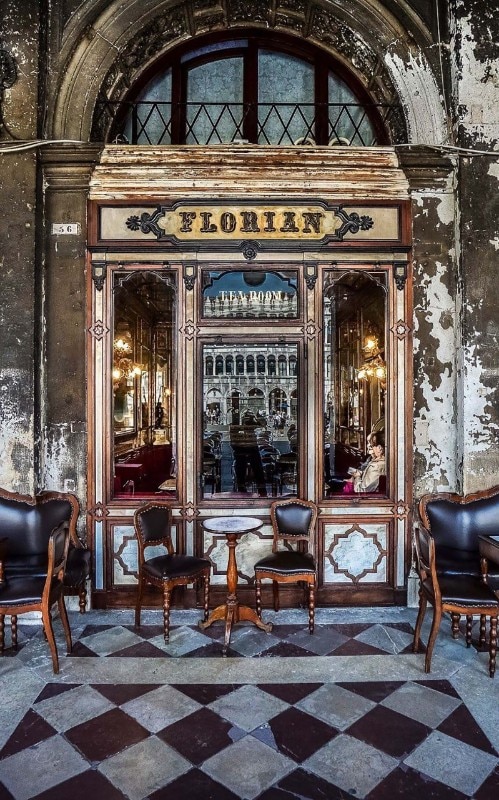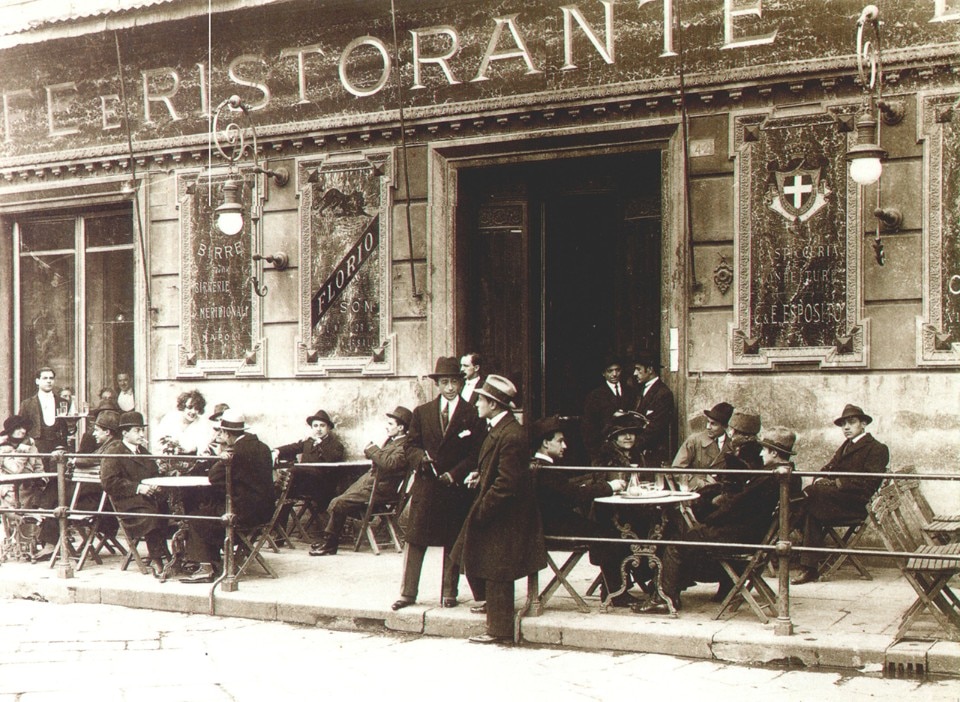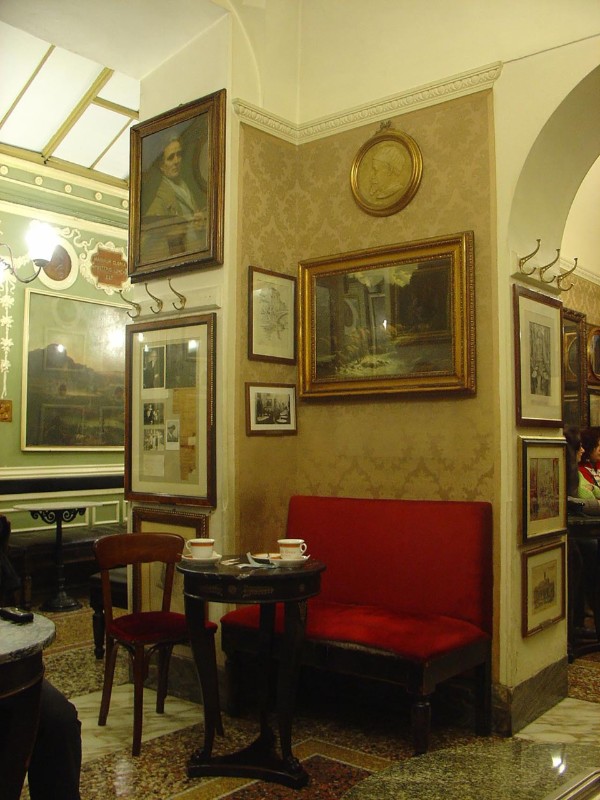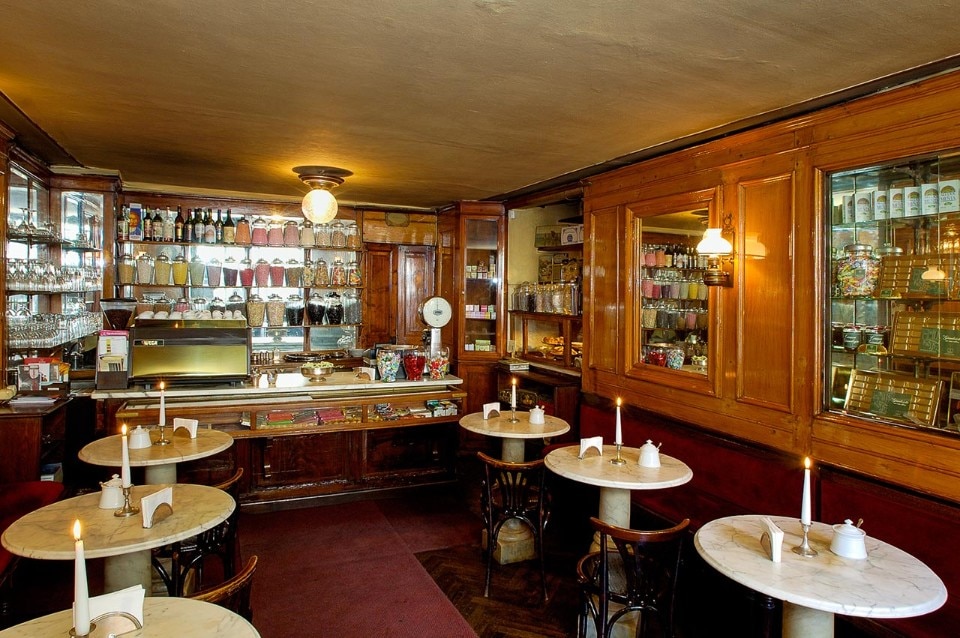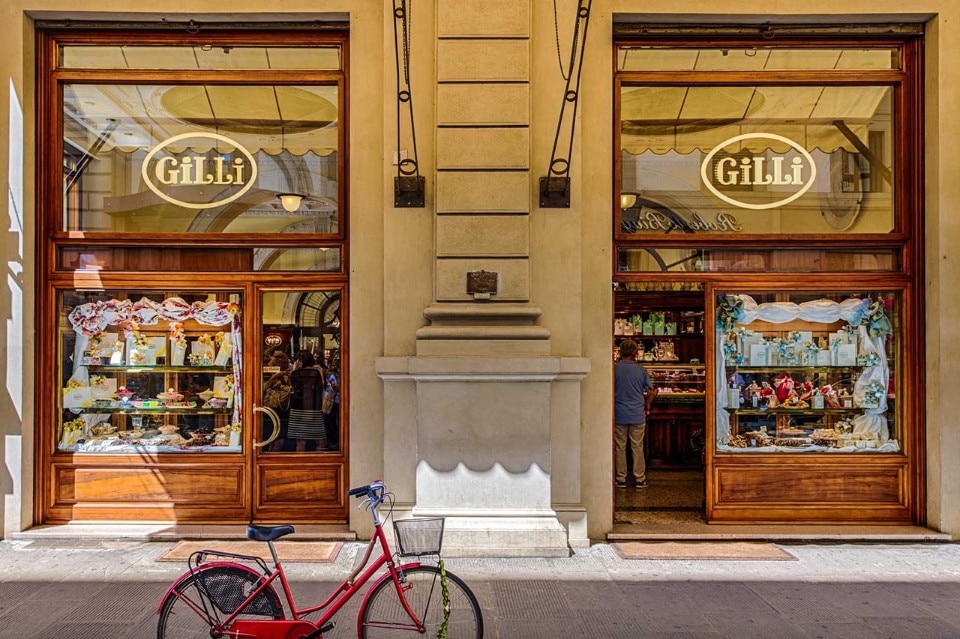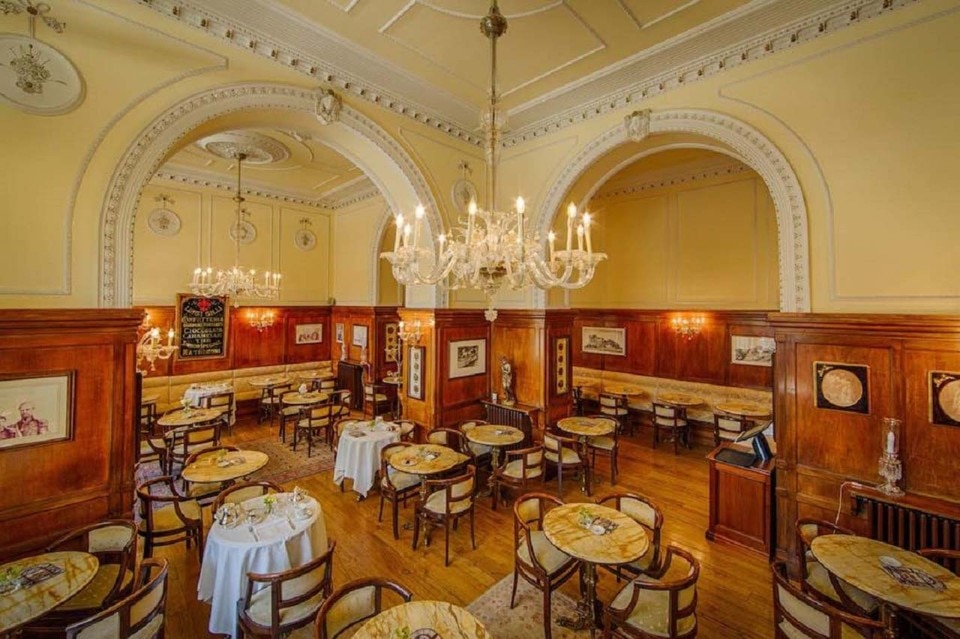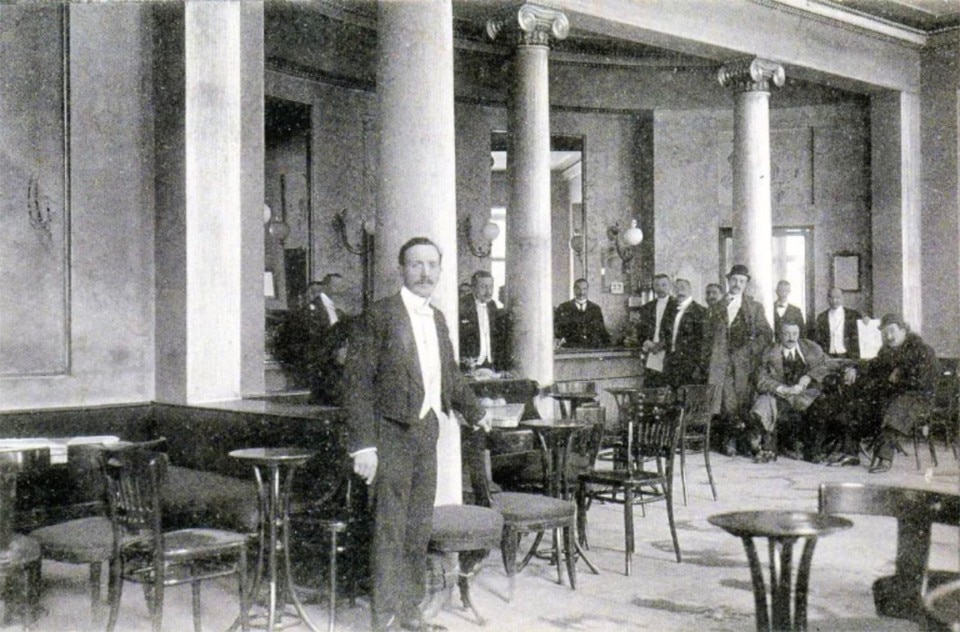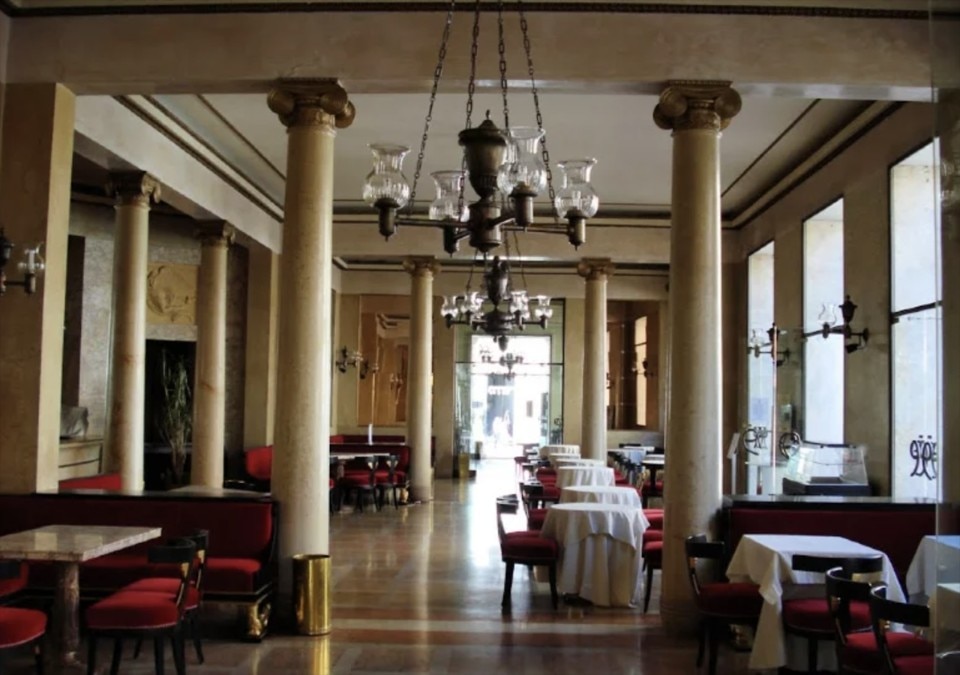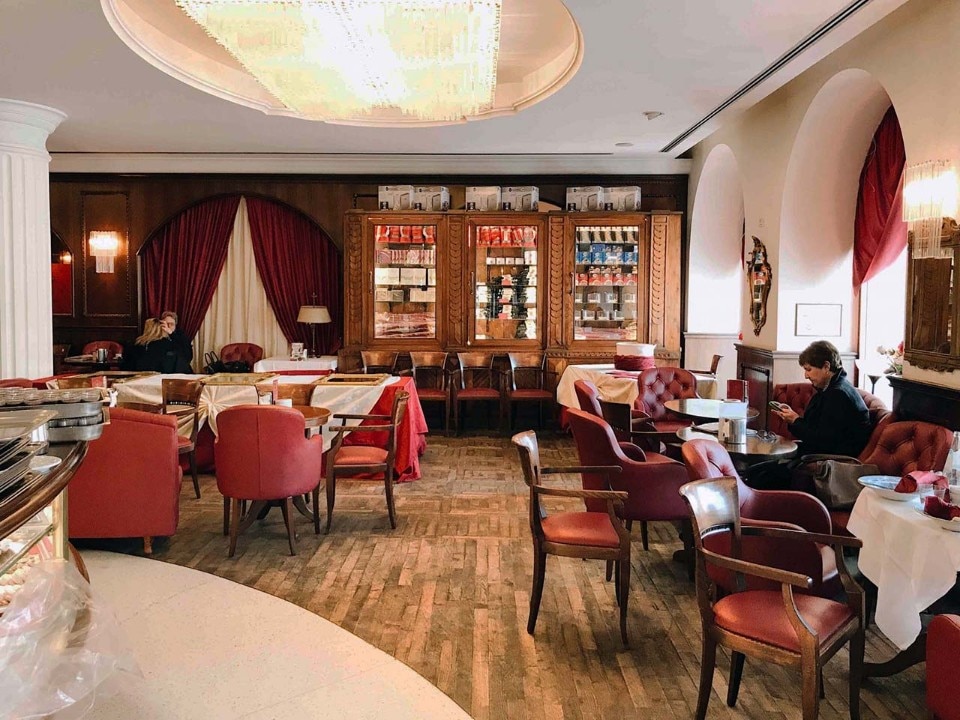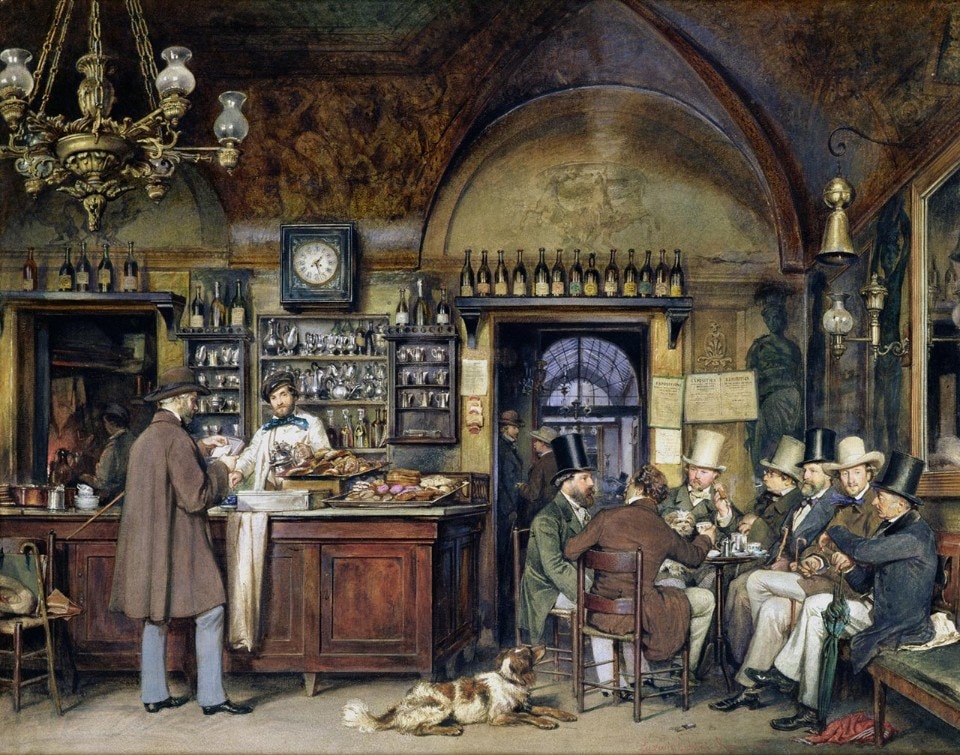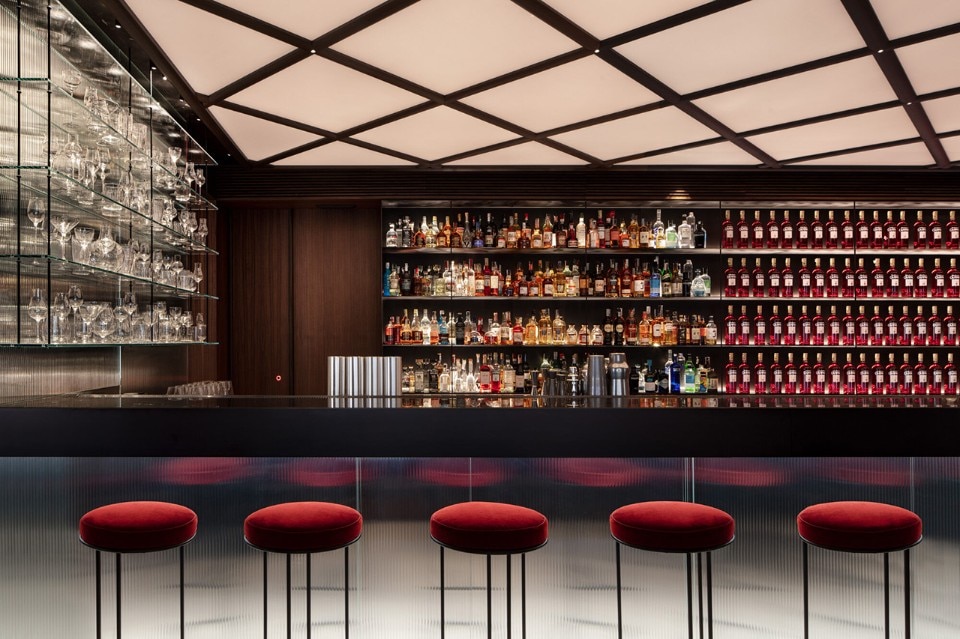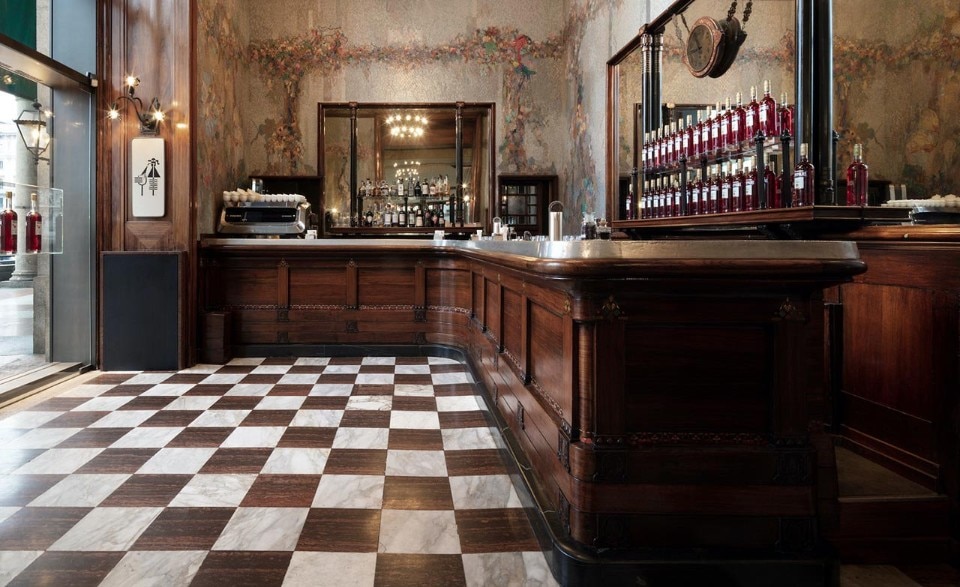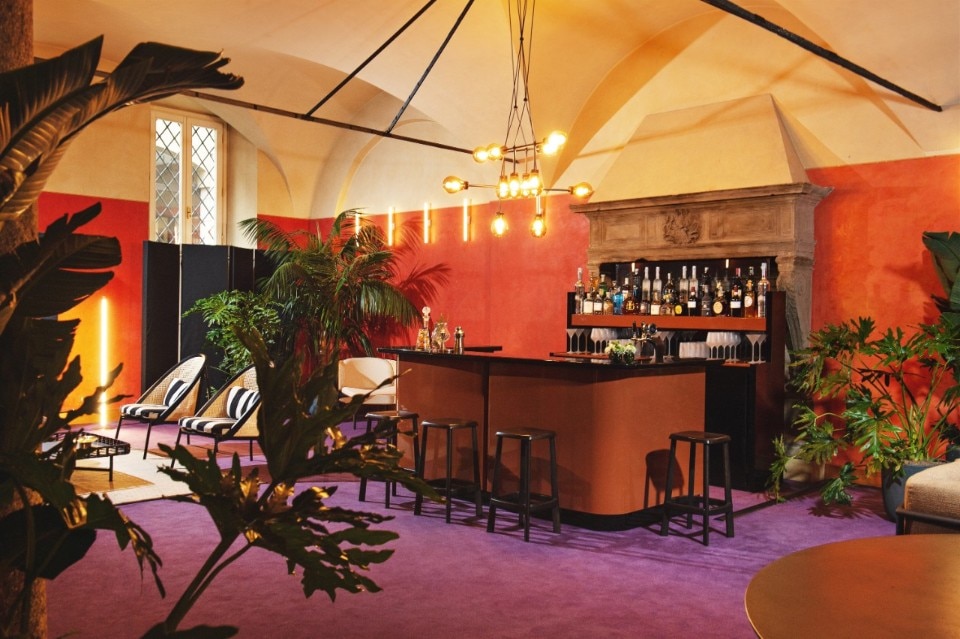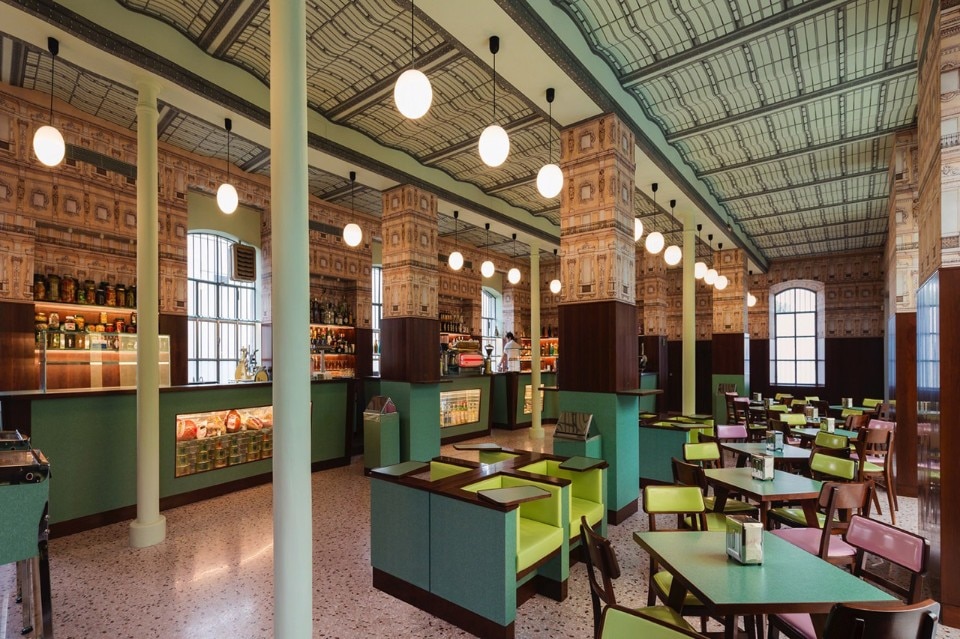Na tazzulella 'e cafè (a cup of coffee), cornetto e cappuccino (croissant and cappuccino), macchiato con brioche (a macchiato and croissant): the dialectal variation does not affect the imperturbable link between the Italian and the café, an authentic and shared emblem of national identification, perhaps even more than football. A mythology, a cult that is not only appetite, but also the exquisitely architectural confirmation of how the consumption of any food or drink is never disconnected from the aesthetics, proxemics and rituals of the place that welcomes it, in a very close link between project and immaterial culture instances.
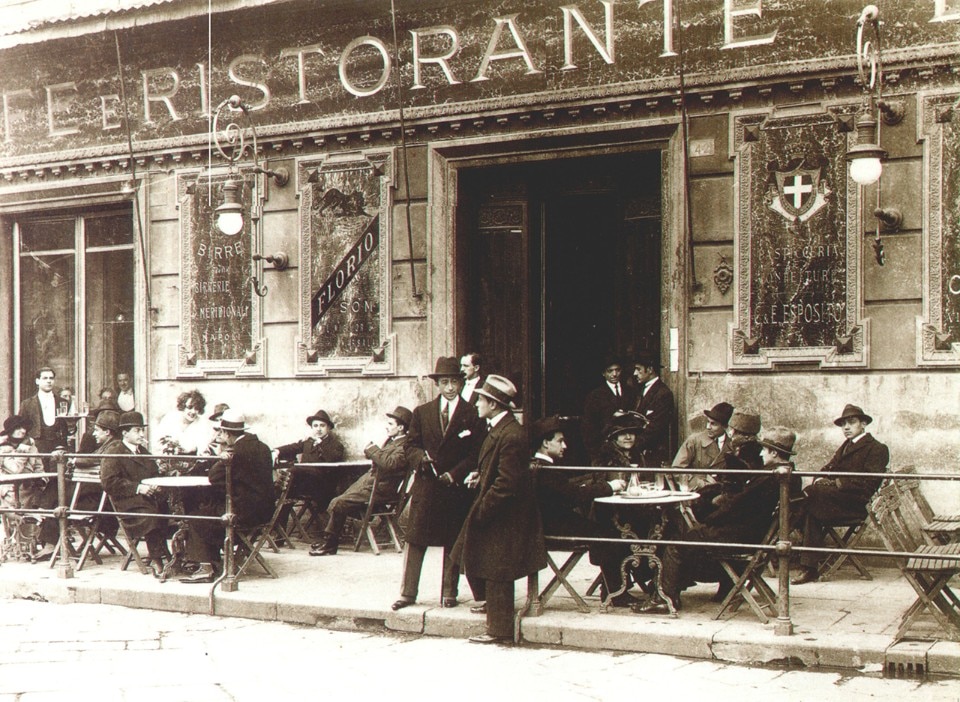
On the Italian-style café origin and etymology there are many hypotheses that do not hesitate to bother the Romans with their restaurateur’s taberna, one of the first commercial activities connected to a specific place, opened on the road, providing food to wayfarers. Another evocative note is the one that interprets the Italian word bar (café) as an acronym of Banco a ristoro (refreshment counter): not only a food comfort, but also a counter, a furniture and a physical demarcation line that marks the space longitudinally, separating in a clear and unequivocal way the shopkeepers’ space from that occupied by the customers. What is certain is that in order to wait for coffee arrival – as a protagonist or wingman? Of this indissoluble duo – it will be necessary to wait for the Ottomans’ intermediation, along with the Siege of Vienna brought the cezve coffee pot to Europe in the 16th century and with it the elixir and exciting drink habit, seen with suspicion by the Popes but finally cleared through customs by virtue of the taste and aroma intensity able to gather consensus and transversal dependence.
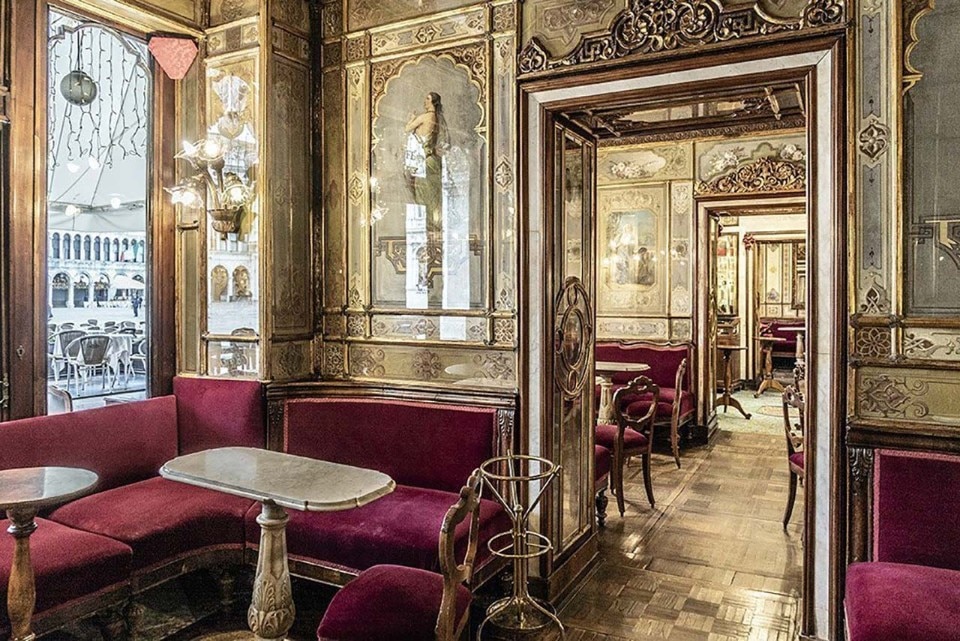
In Italy, the first café openings took place during the 18th century: the Caffè Florian in Venice (1720), the Pedrocchi in Padua (1722), Gilli in Florence (1733), the Caffè Greco in Rome (1760), the Al Bicerin in Turin (1763) and then the Caffè degli Specchi in Trieste (1837) and the Gran Caffè Gambrinus (1860), that celebrates today the 150 years from its foundation despite risking to shut down due to the economic side effects of the Covid-19 pandemic, would all establish themselves as aristocratic and intellectual life meeting places, welcoming, in its spatial scenography, the passage to the iron and steam revolution through the first magnificent coffee machines that at the beginning of the twentieth century occupied the counter central space, staging the fascination and reverence for the nascent industrialization.
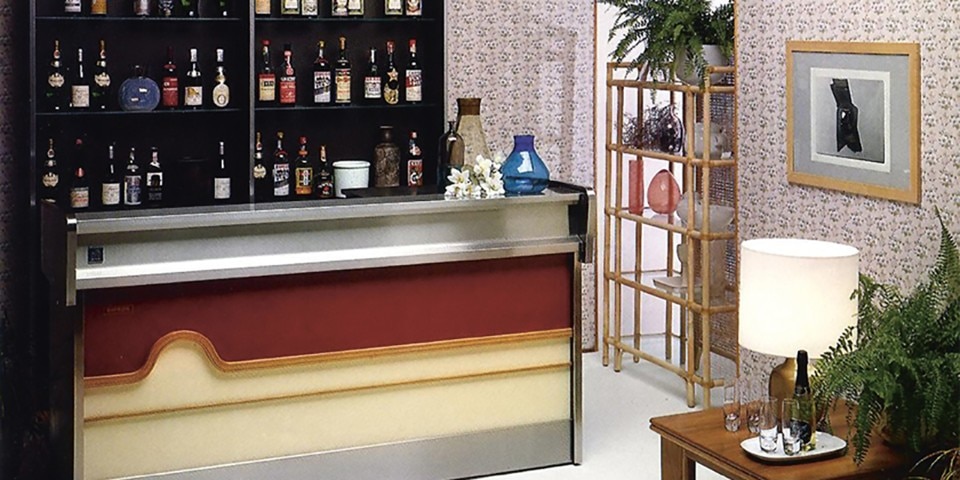
But it was during the twentieth century, and in particular after the two World Wars, that the café would replace the caffè (old café) as a less monumental than authentically popular, democratic and widespread place. The café took inspiration from the caffè for the counter watershed, adapting it to a less spacious and often developed in length place. No longer L and U-shaped, but now also present as a small straight line, the counter is formalised through a series of furnishings that revitalize its functionality and efficiency in terms of performance speed: because unlike its foreign counterparts, the Italian-style café has never lost the habit of the standing consumed cup, often elbow to elbow with other customers, in front of an all-powerful barista – also thanks to the slightly raised platform on which he moves – whose speed of execution has never been imitated by any other European country.
Therefore, to spatially support the optimisation of gestures, the back counter and the under the counter are gradually equipped with shelves for alcoholic drinks, extensions, retractable refrigerators and air-conditioned showcases for pastries and salty food. And it is always around these spatial constants, integrated by small tables - in the most humble cases of small shelves fixed on the wall - that the materials mark the café aesthetics evolution during the twentieth century, expressing the technological chase of a century that, from the predominance of marble, mirrors and brass – or even wood, marble and iron for the poorest realizations – passes seamlessly to the Formica, aluminium and laminates experimentation. The twentieth-century café story is also an inevitable passage between craftsmanship and industrial standardization: for this reason IFI, an Italian company two-time winner of the Compasso d'Oro (2014 with Marc Sadler’s Bellevue Panorama®, 2018 with the R&D Department PopApp, Honorable Mention again in 2018 by Giulio Iacchetti’s Colonna) was the first to launch the industrial café counter in 1968, codifying its modular nature for the benefit of a greater diffusion.
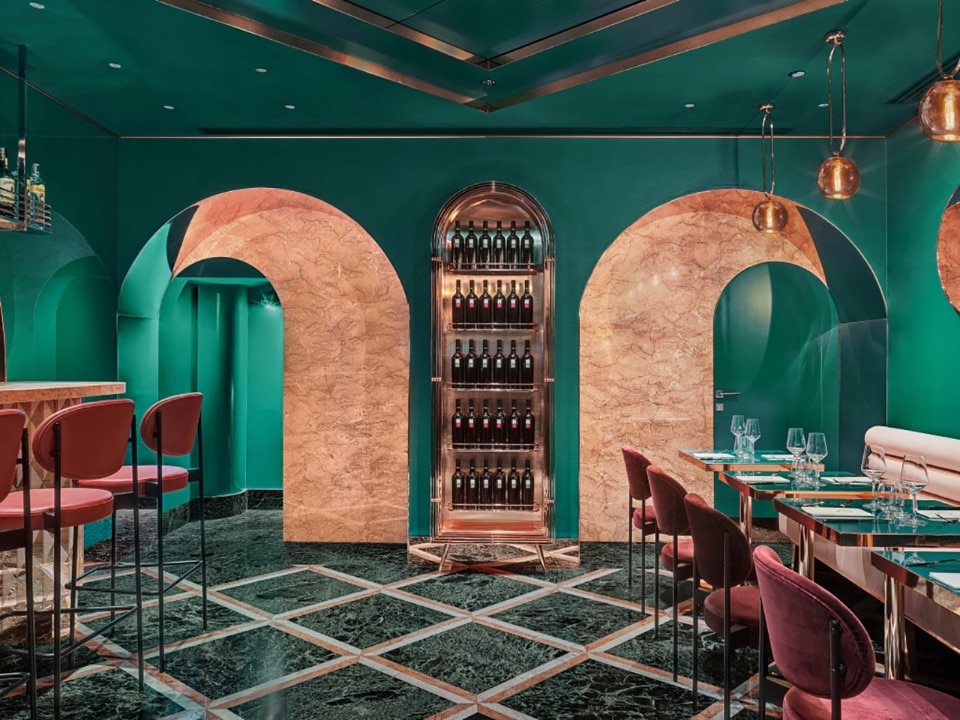
As a place of the soul before of the senses, an early risers stealthy accomplice, a nightcap or a random conversation with strangers, the Italian-style café has not faded its aura even on the occasion of the first American cafés or coworking cafés inception in Italy. Of course, it is perhaps with a certain languor that we remember it at its best in the many timeless incarnations that still characterize Italy today, perhaps the provincial one; that is what, playing with the memory marketing, those projects that today, by exploiting vintage, give life to infinite drowned cementine copies far worse than the original ones. And yet, beyond the nostalgic impulse, recent projects that, aware of this identity background, bring the café up to date in the light of our times, giving it a new lease of life. Let’s think about the Caffè Farnese recent renovation in Rome, which brings the idea of a small but bourgeois café up to date through a dense and timeless colour palette, or the many pop-up cafés that have appeared during design weeks, which play on the scenographic leverage at the expense, often, of the quality of the service (and here it comes to mind the inimitable Bar Basso, a cocktail bar so dear to the design community that remains a better original than any copy).
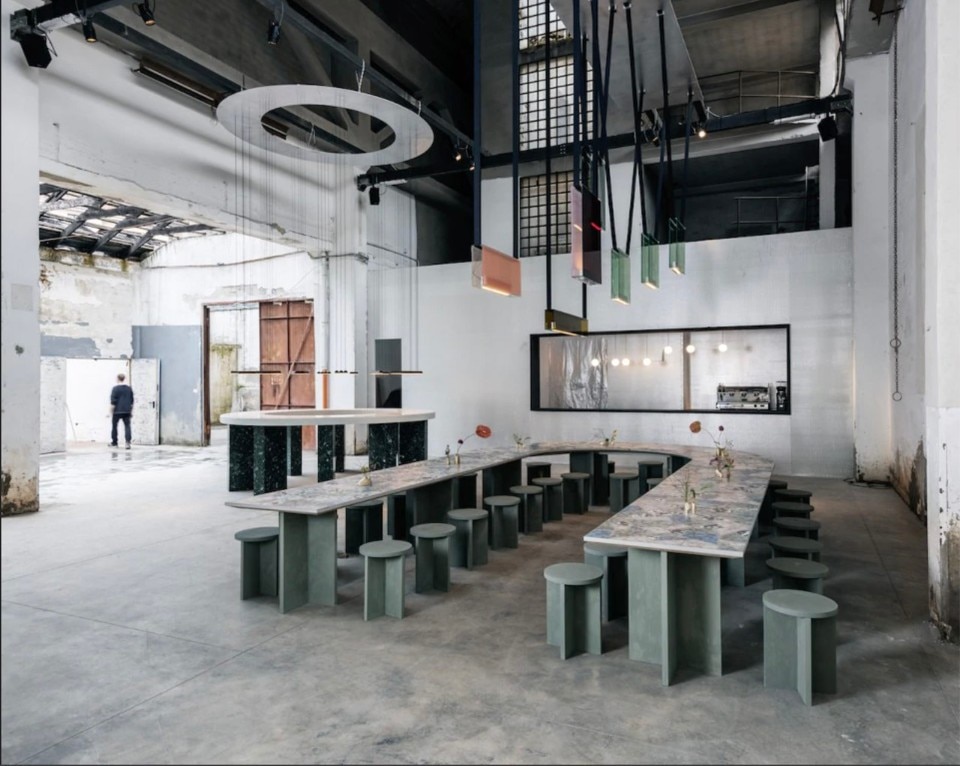
Will the café of tomorrow change its skin again? We feel like betting that technology will redefine its connotations, perhaps making it mobile, interactive, equipped with intelligent materials – perhaps, given the period, sanitised – and, who knows, perhaps paying more attention to the nutritional balance of its paper. Are these reasons for rethinking about its emotional bond? Not as long as a counter, a barista, and the sound of na tazzulella 'e cafè resting on the saucer will exist.


